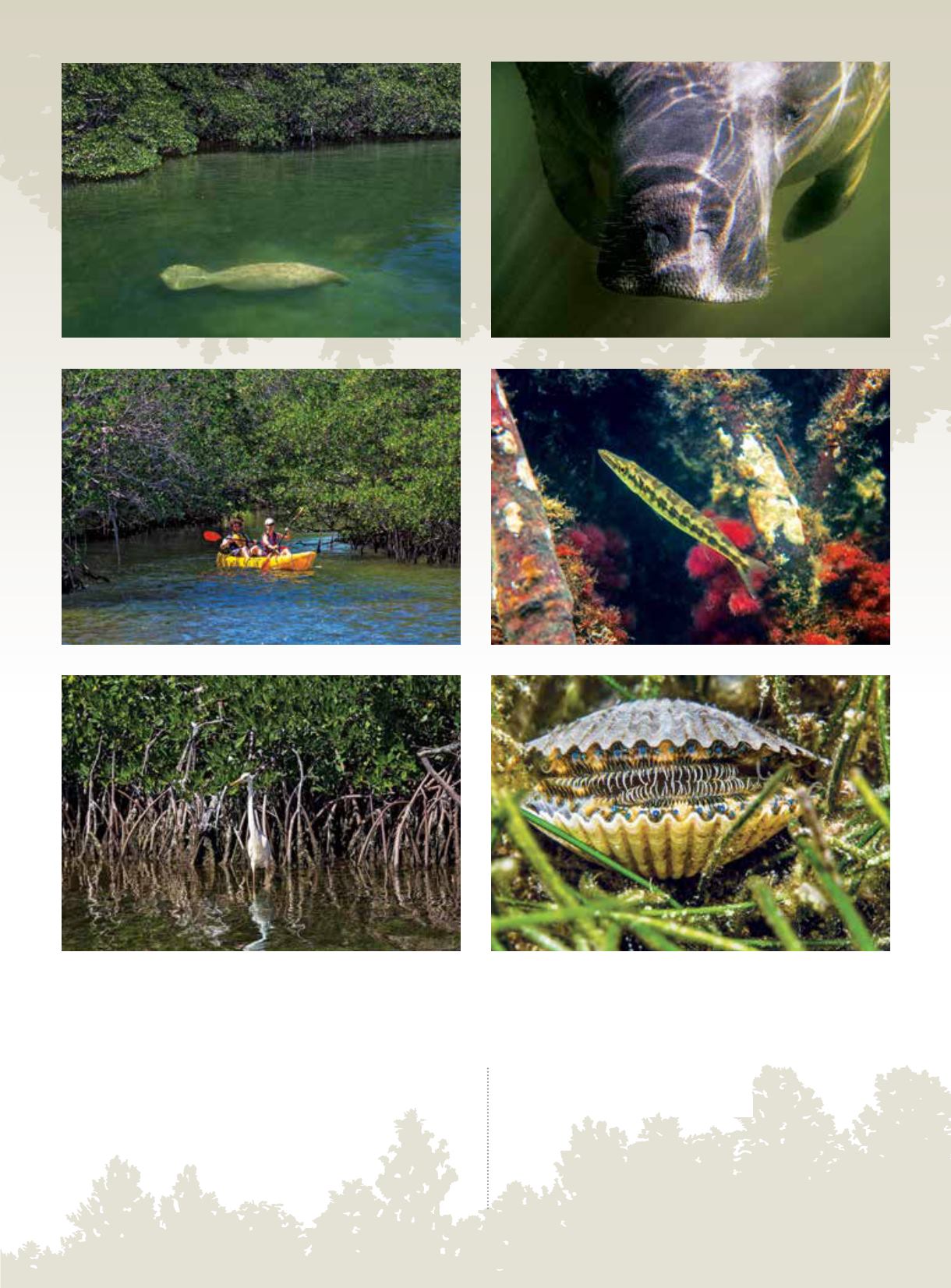
Kruczynski WL and Fletcher PJ (eds.). Tropical Connections: South Florida’s
marine environment. (Cambridge, Md.: IAN Press, University of Maryland
Center for Environmental Science, 2012).
McKenzie L. Seagrass Educators Handbook. (Cairns, Australia: Seagrass-
Watch HQ, February 2008). Available at
.
|
87
Clockwise from upper left: Manatees prefer to live inshore where there is plenty of seagrass to eat. Manatees breathe at
the surface through nostrils that have valves that close when they are underwater. A cigar-sized juvenile barracuda enjoys
the protection of the mangrove forest. Blue-eyed scallops may appear sessile, but they can move using jet propulsion when
threatened. A great blue heron (white morph) is one of the many wading birds that depend on mangrove islands for refuge.
Kayaking among the mangroves provides a peaceful opportunity for spotting birds, fish and manatees.
ABOUT THE AUTHOR
references
Sarah Egner is director of research and development at Marine Resources
Development Foundation.
STEPHEN FRINK
STEPHEN FRINK
STEPHEN FRINK
STEPHEN FRINK
JESSICA PULFER
JESSICA PULFER


